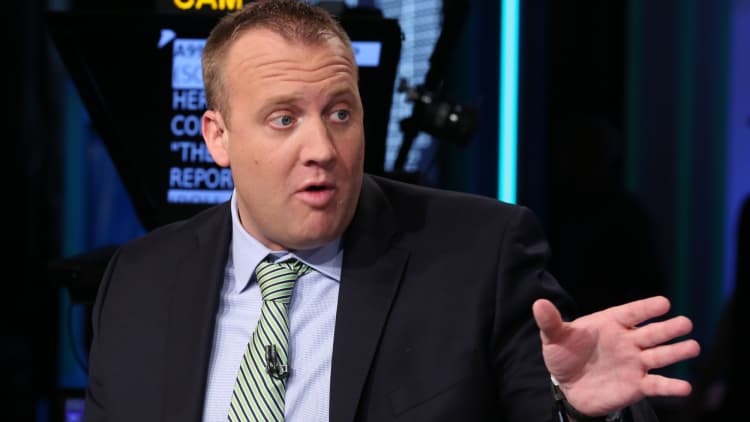
Stocks fell on Monday as bond yields resumed their August downturn, raising concerns about the state of the economy.
The benchmark 10-year Treasury yield, which fell to its lowest since 2016 last week, dipped to 1.63%. The spread between 2-year and 10-year Treasury yields narrowed to only 6 basis points on Monday, near its lowest level since 2007.
Dow Jones Industrial Average fell 391 points, or 1.49%, to 25,896.44, while the S&P 500 dropped 36.21 points, or 1.24%, to 2,882.44 and the Nasdaq Composite is down 1.2% to 7,863.41. It was the second down day in a row for the market, which had staged a remarkable recovery last week until the selling returned again on Friday.
"The bear is alive and kicking," Mike Wilson, Morgan Stanley's chief U.S. equity strategist, said in a note on Monday. "We think the failed breakout last week for the S&P 500 confirms we are still mired in a cyclical bear market."
Bank stocks declined as interest rates dived. Bank of America and Goldman Sachs both dropped more than 2%, while J.P. Morgan slid 1.87%. The SPDR S&P Bank ETF is down 2.1% on Monday.
Also hurting stocks were the intensified Hong Kong protests, which soured investor sentiment already aggravated by the trade dispute between Washington and Beijing. Hong Kong International Airport cancelled all departures for the remainder of the day, citing serious disruptions due to intensifying protests.
Trade bellwether Caterpillar fell 2.2% and Boeing declined more than 1%. Retailers, who are targeted in the latest round of China tariffs, are under pressure as Office Depot tanked 5.6% while Nordstrom slipped 2.35%.
Adding to the geopolitical risks were the Argentina's election results which took markets by surprise as the country's center-right leader, President Mauricio Macri, performed poorly in primary elections. The outcome triggered a sell-off in peso and Argentina's stocks, which are down 30%.
Major U.S. stock averages suffered their worst days of the year on Aug. 5 after China allowed its currency to drop against the dollar below a key level unseen since 2008. Still, the Dow recovered to only finish last week lower by less than 1%.
"These are not necessarily familiar risks, but this is not new and different," said Kate Warne, investment strategist at Edward Jones. The fact that markets didn't have a bigger decline "should be reassuring that investors are not seeing this as a see change; they are seeing it as one more episode in what we all expect to be a long-running set of tensions both between the U.S. and China and the rest of the world."
The intensified tensions caused Goldman Sachs to lower its fourth-quarter growth forecast by 20 basis points to 1.8% as the firm no longer expects a trade deal before the 2020 election.
Bank of America on Monday raised chance of a recession to 1-in-3 in the next 12 months as the firm believes many economic indicators are "flashing yellow."
The People's Bank of China on Monday set its daily midpoint for yuan trading at 7.0211 per dollar, the third consecutive session below the psychological level of 7 per dollar. A weaker currency makes a country's exports cheaper and President Donald Trump's administration has consistently complained that a cheaper yuan would give China a trade advantage.
Trump said Friday that the U.S. would continue to hold trade talks with Beijing, but that Washington was not prepared to make a deal for now.
The Hong Kong protests have gained steam with about 600 people arrested in total since the unrest began. Steve Eisman, the investor of "Big Short" fame, said last week the protests are his biggest worry with the global economy, calling them a possible "black swan."
— CNBC's Sam Meredith, Saheli Roy Choudhury and Matt Clinch contributed to this report.


